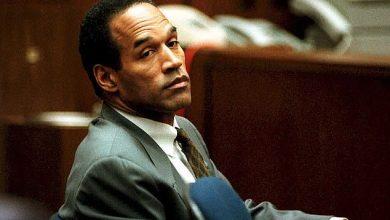How Biden’s New Student-Debt Relief Plan Could Already Be at Risk

On the same day that the Supreme Court struck down Biden’s first attempt at broad debt relief in late June 2023, the Department of Education announced its Plan B: relief for borrowers using authority under the Education Act. higher education in 1965.
Unlike the HEROES Act — the law Biden used for his first attempt at relief — the HEA requires the administration to submit to a process known as negotiated rulemaking. The process requires a series of negotiations with stakeholders before drafting the regulatory text of the rule, which then enters a public comment period before the relief can be implemented.
The Department of Education completed negotiations on the relief in February. He released new details on the rule on April 8 – but senior administration officials previously said the draft text would be released in the coming months, and implementation of the relief is expected to begin in earlier in the fall.
Not only does this timeline coincide with the presidential election, which could jeopardize any relief if Biden loses, but it also places relief in the shadow of Supreme Court decisions expected to be issued between now and June.
How a Supreme Court Ruling on Fishing Could Affect Student Debt Relief
Cary Coglianese, a professor of administrative law at the University of Pennsylvania, told Business Insider that “there is a broader context in which this plan would be evaluated if it were ultimately to go to court, which I ‘hope this will be the case.’
And that broader context, Coglianese said, is “perhaps the complete retreat of deference to agencies in their interpretation of laws.”
Coglianese is referring to a rule known as the Chevron doctrine, the fate of which currently awaits a decision by the Supreme Court. In a case known as Loper Bright Enterprises v. Raimondo, A group of fishermen has challenged the National Marine Fisheries Service’s interpretation of a law requiring certain fisheries to pay or subsidize the salaries of certain federal agents who participate in fishing expeditions to collect data.
Fisheries opposed this interpretation, questioning the Chevron Doctrine, which allows federal agencies to interpret a law as they see fit, as long as it does not interfere with congressional language.
So, if the Supreme Court invalidates Chevron, federal agencies would no longer have the power to decide laws related to their responsibilities – meaning the Department of Education would not be able to interpret its relief power of student debt under the Higher Education Act.
“It would seem to me to just provide another sort of simmer in the arsenal, if you will, to return Biden’s debt relief plan,” Coglianese said.
“In other words, we have a Supreme Court in which, in general, they are skeptical of agency action, at least with respect to a certain type of agency action, and with a case student debt relief, they’ve already sent a signal that they think this goes further than Congress has specifically authorized,” Coglianese said. “And if they eliminate the deference to Chevron, that suggests they are taking very seriously not giving agencies much leeway.”
Lawsuits likely to target scope of law
Although the regulatory text of Biden’s new student debt relief plan has not yet been released, its recently released details targeted different categories of borrowers that the Department of Education plans to make eligible for relief . It includes up to $20,000 in relief for borrowers with unpaid interest, as well as loan forgiveness for those who have been in repayment for at least 20 years.
The Department of Education argued that it had the authority to adopt this measure under the HEA’s compromise and settlement authority, which states that the department may “enforce, pay, compromise, waive or release any right, title, claim, lien or demand.” related to federal student debt.
However, Luke Herrine – an assistant professor of law at the University of Alabama – told BI that any legal challenge would likely call into question the department’s interpretation of the HEA’s authority over debt relief and would argue that Biden’s plan is too broad.
“The fight will be mainly, I suspect, about whether a clause which on the surface seems very broad is actually as broad as it looks, which is partly a question of who is going to resolve the ambiguity of this clause? rely on an agency to make this decision for the agency? And increasingly, it happens that the conservative judiciary does not believe in any kind of deference to administrative agencies? ” said Herrine.
Herrine said he expects the same groups that filed lawsuits against Biden’s first debt relief plan to challenge this second one. Some of them have already filed lawsuits challenging Biden’s new income-based SAVE repayment plan, including Missouri Attorney General Andrew Bailey, who wrote on X that he would see Biden in court after new details on debt relief were released.
Ultimately, it depends on how courts interpret the Department of Education’s authority, and if legal challenges arise, Coglianese said it’s likely the arguments will be very similar to the cases that ended up by canceling the first student loan forgiveness plan.
“The administration certainly still faces a very skeptical Supreme Court,” Coglianese said. “Even though it’s a different law, the Supreme Court remains skeptical. It’s still a pretty big program, even if it’s smaller.”
“So there is a risk that the court, ultimately, will not allow the administration to move forward with this case for the same reasons that it did not allow it to move forward with this case. ‘before from the first round,’ he continued. “It is clear, however, that this is a risk that the administration wants to take on behalf of the American public and a large portion of the American public who are burdened by many student loans.”
businessinsider





